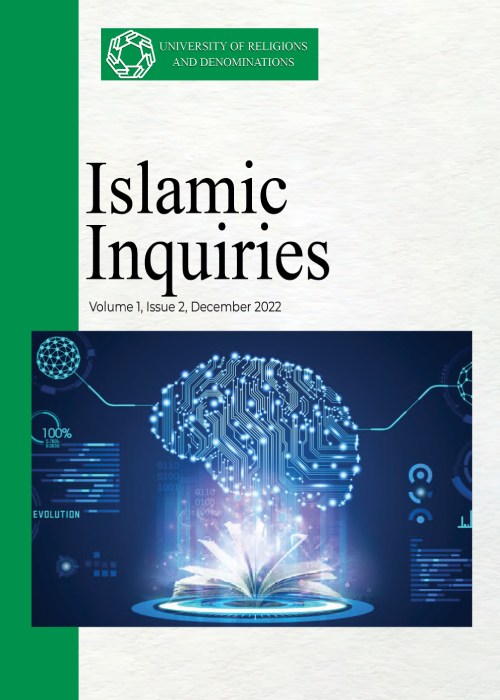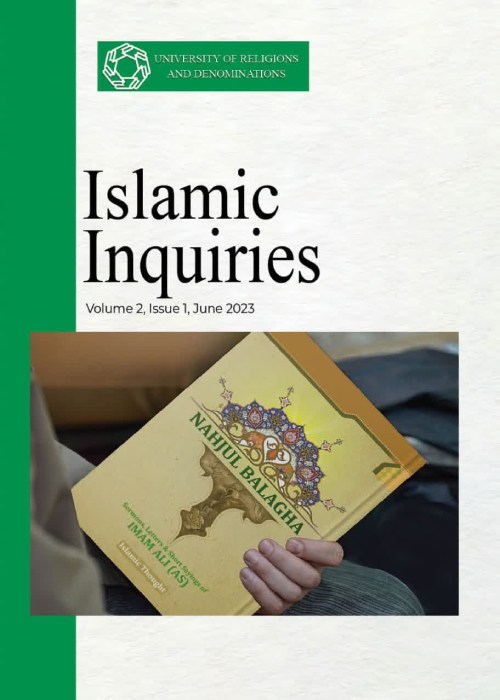فهرست مطالب

Journal of Islamic Inquiries
Volume:1 Issue: 2, Summer and Autumn 2022
- تاریخ انتشار: 1402/03/28
- تعداد عناوین: 6
-
Pages 107-125The research examines the role of artificial intelligence (AI) in the issuance and dissemination of fatwas in Sunni Islam today. It offers an overview of the history of fatwas and the radical changes that the discipline has undergone throughout Islamic history. It then proceeds to examine two case studies of AI employment in issuing a fatwa by two important institutions of Sunni Islam: The Islamic Affairs and Charitable Activities Department in Dubai and Al-Azhar Fatwa Global Centre in Cairo. Media presentations and examination of the actual “Virtual Ifta” service are feeding the data for the former and an unstructured interview with two Al-Azhar Fatwa Global Centre employees in Cairo for the latter. The findings demonstrate the competition over religious authority that those two case studies underline and the limitations and dangers of using AI in fatwa issuance. Finally, a survey designed for this research offers insight into the understanding and attitudes of lay Muslims on the matter.Keywords: Artificial intelligence, Shariah, Ijtihad, Ijma, Mufti, Al-Azhar
-
Pages 127-145There is very little scholarly work about the shahid (martyr) conception in the Islamic history of China both in the Chinese and the Western academic circles. This paper has employed Chinese historical materials, private publication as well as the official records to analyze the substantial notion of shahid in the historical procession of the imperial dynasties, and its social interaction between the Muslim minorities and Chinese society. It concludes that the martyr perception is one of the fundamental parts of the Islamic doctrine for Muslim communities in China, which often face hostile surroundings. The conception of shahid has played a crucial role as a spiritual power to protect Chinese Muslim communities from the pressure being assimilated to, or contained in, the non-Islamic culture in the context of political turmoil.Keywords: Shahid, Islam, History, the China Empire
-
Pages 147-160
It is a complicated theological issue to provide an account of God’s relationship with the temporal world. The issue was addressed in the hadiths from the Shiite Imams as well. The hadiths fall into various prima facie conflicting categories. Since it is crucial to consider revelatory sources on the matter, we should not exclude any of these hadiths; rather, we need to reconcile them based on the extant evidence. In the first instance, some hadiths apparently reject God’s compresence with the temporal world, but upon closer reflection, it turns out that non-temporality of God does not rule out His concomitance with temporal entities. Instead, it amounts to rejection of His influence from, or being otherwise limited by, the passage of time. Such construal might be compatible with two interpretations: first, God is always concomitant with present or current events of temporal entities, and second, all entities are present to God from pre-eternity to post-eternity, and His concomitance is not confined to the present temporal entities. The first implies that the world was created on a gradual basis, and the second entails its instantaneous creation. In the final analysis, these views can be reconciled: all creatures were instantaneously created in a world other than the temporal world, but then they gradually unfolded in the temporal world.
Keywords: God’s concomitance with time, hadiths, instantaneous creation, gradual appearance, temporal world -
Pages 161-174
Almost all Quranic exegetes believe that verses 16-19 of Sura al-Qiyāma are digressions between other main verses. While exegetes and lexicologists take the word bayān to mean an exposition or interpretation of Quranic verses, a distinction should be drawn between exposition and interpretation of the Quran. In verse 19 of the sura, the term “lie with Us” suggests God’s commitment to the expository revelation of Quranic verses, which the Prophet taught his companions, as he taught the Quran itself. What distinguishes Imam ʿAlī’s Muṣḥaf (written copy of the Quran) from ʿUthmān’s Muṣḥaf is the addition of expository revelation alongside the Quranic verses. Since Imam ʿAlī’s Muṣḥaf were inherited by later Shiite Imams, their followers were not deprived of expository revelation.
Keywords: Sura al-Qiyāma, exposition, expository revelation, Quranic revelation, Imam ʿAlī’s Muṣḥaf -
Pages 175-188Several major Imami sources of history, dating back to the early Islamic centuries, are not available to us. This article is concerned with the main non-physical causes of the loss of these sources, such as formation of hadith communities, negligence of historical works, and excessive focus on theology and jurisprudence. The research is done with the descriptive-analytical method based on library sources, book catalogues, bibliographies, and the views of scholars. The hypothesis put forward in this article is that change of attitude on the part of Imami scholars led to the enrichment of some fields of study and impoverishment of others. The findings confirm this hypothesis for the main non-physical cause of the loss of historical sources, as opposed to certain alleged physical causes. Since citation is a significant criterion for accreditation of research data, then if these missing sources were available to us, the findings of historians could be more accurate and cogent and there would be no ground for reliance on famous historical accounts.Keywords: Historical Sources, Shiism, Missing Sources, physical causes, non-physical causes
-
Pages 189-201Intertextuality is a theory of interaction or relation between texts, which results in the creation of a novel idea. On this theory, every text or writing is derived from other texts, and there is no writing apart from other writings. The Quran, as the guidebook of humankind, affects the hadiths of the Prophet and Shiite Imams (a), which is why the latter frequently cite the former. One text of hadiths, which bears an intertextual relation with Quranic verses, is Nahj al-Balagha. Focused on the theme of the “hereafter,” this research adopts a descriptive-analytical method to answer the following question: How to analyze the intertextual relations between Nahj al-Balagha and the Quran on the theme of the “hereafter”? The results show that there are only two cases of full intertextuality in Nahj al-Balagha. In several parts of Nahj al-Balagha, there is modified intertextuality, but there is widespread allusive intertextuality in the words of Imam ʿAlī (a), as he frequently talks about the hereafter using themes from Quranic verses.Keywords: Quran, Nahj al-Balagha, hereafter, Full textual intertextuality, full modified intertextuality, allusive intertextuality


